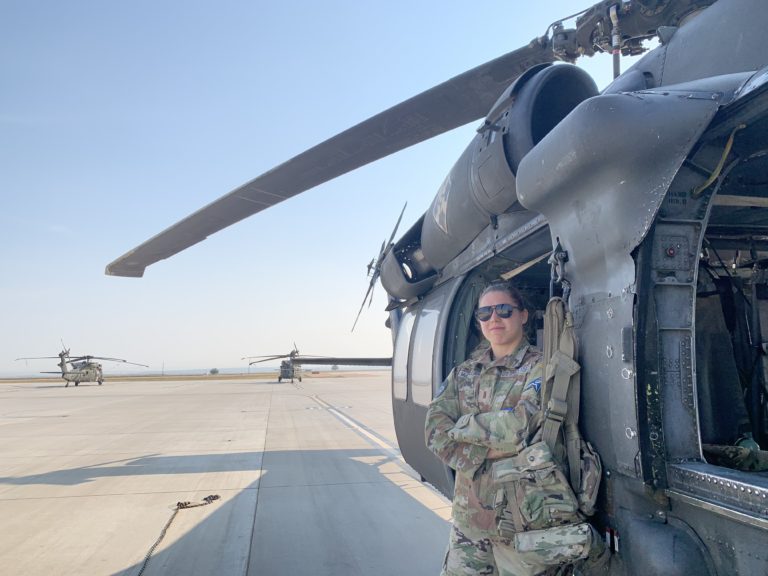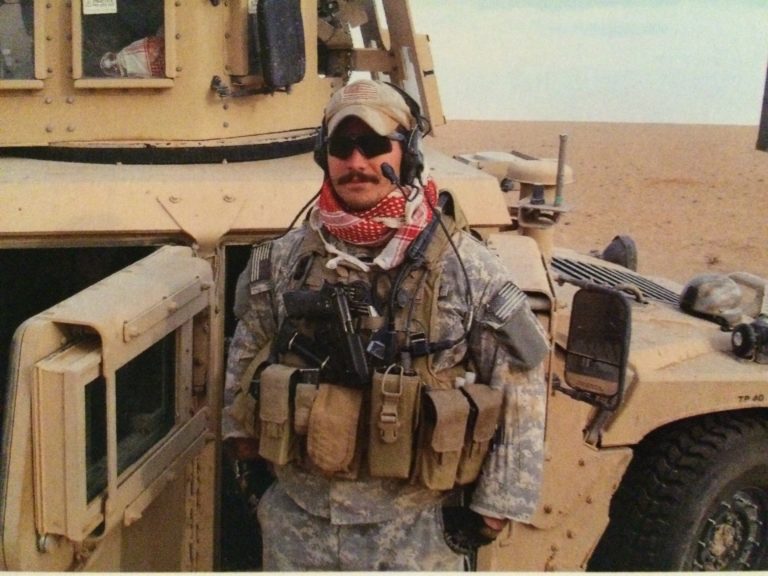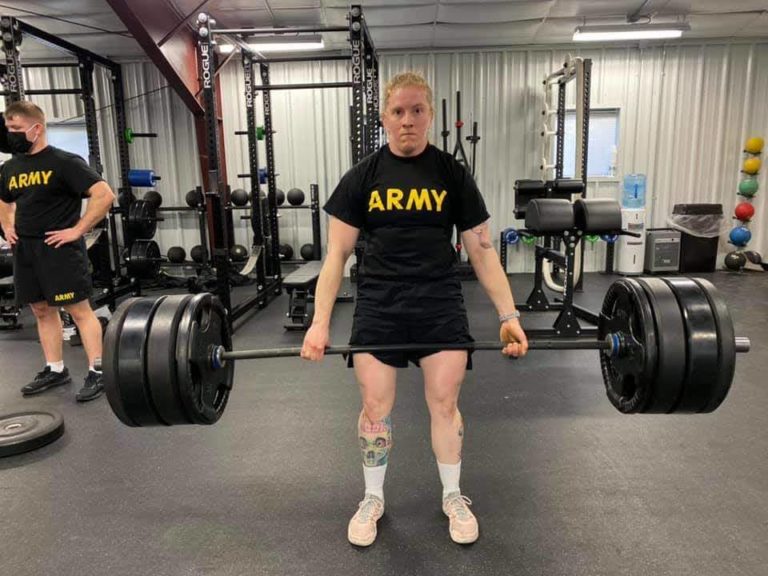Training for the unknown and unknowable is essential to thrive amid the unpredictability of life. It becomes all the more important in a combat zone or military environment. Every day, members of the United States military face taxing physical and mental challenges as they serve their country. For veterans whose service is complete, another host of challenges awaits.
“Virtually everyone I’ve ever served with has experienced some sort of ailment, whether physical, mental, or both,” Army National Guard 1st Lt. Ellia Miller said. “Serving in the military inherently subjects your body to physically demanding and high-stress situations.”
As veterans reacclimate to a civilian lifestyle or a return from deployment, many face challenges such as post-traumatic stress disorder, musculoskeletal injuries and pain, mental-health issues such as depression and anxiety, and traumatic brain injury, to name a few. Many have found a beneficial support system in CrossFit.
Service members are a longstanding and significant part of the CrossFit community. Currently, there are 194 non-commercial U.S. military CrossFit affiliates, which are located on military bases and are accessible to active-duty personnel free of charge. I had a chance to talk with U.S. Army Lt. Col. Tony Kurz, U.S. Space Force 2nd Lt. Gabby McClelland, U.S. Air Force Capt. Mitch McClune, and Army National Guard 1st Lt. Ellia Miller about the issues facing veterans today and how CrossFit training and the community can help.
Physical Benefits of CrossFit for Veterans and Active-Duty Service Members
In May of 2010, the U.S. Army published a 69-page study documenting the effects of CrossFit training on combat readiness. A mix of 14 men and women completed eight weeks of CrossFit training. The study began with an assessment of participants’ current fitness levels, which “tested their ability to perform a variety of functional movements across modalities and for differing periods of time.” Participants were re-assessed during the final week.
The findings noted a significant improvement in overall fitness in all participants regardless of their fitness level at the start.

U.S. Space Force 2nd Lt. Gabby McClelland
McClelland, who graduated from the United States Air Force Academy in 2020, said she can relate to the study’s conclusion.
“Physically, CrossFit has done exactly what it’s supposed to do: provide me with overall health and fitness. … When the time rolls around to take the annual fitness test, I don’t need to scramble to work on my push-ups, running, etc.,” McClelland said. “I’m already prepared because CrossFit has kept me in shape to pass the fitness test confidently.”
Earlier this year, McClelland put her fitness to a different kind of test when she took second in the women’s Military Service Member category of the Occupational Games, an annual CrossFit competition that finds the world’s fittest service members. In 2022, the competition will include a new Veterans category.
McClune, who took first in the men’s Military Service Member category in this year’s Occupational Games, said many service members struggle to meet military fitness requirements, noting CrossFit takes the guesswork out of how to get in optimal physical shape.
“CrossFit training is extremely helpful … because it gives (service members) an avenue to get back on track. They don’t have to worry about creating training plans or what they are going to do each day,” he said. “That’s all taken care of; it’s just a matter of showing up and getting after it.”

U.S. Army Lt. Col. Tony Kurz
Kurz said he has noticed a progression toward a more functional-fitness-based approach in the military sector in recent years.
“In the past few years, special operations units have begun to employ functional-fitness trainers and techniques, Army physical-fitness facilities have transformed to include functional-fitness spaces, and the Army has even revamped our fitness test to include functional events such as the deadlift and the sprint-drag-carry,” Kurz said.
Kurz highlighted the rehabilitative benefits CrossFit can have as well and even credits CrossFit with his own physical resiliency, noting he experienced a swift recovery when he suffered a collapsed lung.
“I know plenty of fellow service members who have experienced life-altering injuries, both combat-related and not, that have used functional fitness and CrossFit techniques to rehabilitate and return back to health,” Kurz said.
Miller, who took first in the women’s Military Service Member category of the 2021 Occupational Games, said as a platoon leader, she’s often introduced CrossFit to soldiers struggling with chronic pain.
“For many of my soldiers, CrossFit helped them to understand their bodies, take control of their physical health, and overcome the chronic pain they were experiencing due to their military duties,” she said.
Mental Benefits of CrossFit for Veterans and Active-Duty Service Members

Army National Guard 1st Lt. Ellia Miller
A study by Belmont University focused on the mental-health issues plaguing soldiers with the goal of determining CrossFit’s “efficacy for combat trauma related injuries.”
The study concluded “high intensity sports performed in a community environment significantly reduces PTSD and depressive symptoms.” This resonates with McClelland, who said CrossFit helped pull her out of depression after college when she relocated for a new assignment during the height of the COVID-19 pandemic.
“The gym on base eventually opened up, and I found a group of CrossFitters that gladly accepted me and let me work out with them,” she said. “I felt like I was at home again … . That’s one of my favorite parts about CrossFit: the sense of community and global integration. You can move anywhere in the world, and if you can find a CrossFit gym, you’ll find an amazing group of people that are always there to help you and support you.”
Miller said CrossFit helped improve her mental capacity for the demands of the military.
“(CrossFit) has helped me build my mental toughness and resilience to know that even when my body wants to quit, I’m capable of more, and I can always keep pushing,” she said. “CrossFit has helped to pull me out of some dark places throughout my military career. Although my deployment was not a combat deployment, there is still a mental toll that a non-combat deployment can take on a soldier.”
McClune echoed the sentiment.
“Most of my experience with service members who are struggling stems from a feeling of detachment, whether that’s from coming back from deployment, moving to a new duty station or just not having something that they feel they’re a part of,” he said. “A good CrossFit gym can provide that community for someone to feel valued and like they belong.”
How the CrossFit Community Can Help

U.S. Air Force Capt. Mitch McClune
The CrossFit community can provide a stepping stone that helps veterans feel less alone as they reacclimate to civilian life.
Kurz said he believes wholeheartedly in the therapeutic effects of CrossFit.
“I truly believe that CrossFit can be a very valuable tool for anyone struggling with mental or emotional health,” he said. “Many service members, especially combat veterans, have experienced things throughout their career that may be hard to deal with, process, or recover from later in life. Even for those who don’t experience PTSD, transitioning to civilian life after the military can be challenging because many service members’ identities are completely tied to their military service.”
Miller has encountered the mental benefits of CrossFit on service members as well.
“I have seen CrossFit pull many soldiers out of some very dark places, mentally,” she said. “I have watched soldiers return from combat deployments feeling as if there was nothing they could do to mentally recover from what they experienced overseas. I have watched these same soldiers step into a CrossFit box and be instantly embraced and lifted up by the CrossFit community.”
The bond of the CrossFit community, Miller added, is unrivaled.
“One of the most wonderful things about CrossFit is that anywhere you go, the CrossFit community welcomes you with open arms into their family,” she said. “And while that will never be quite the same as the bonds we form with our brothers and sisters in arms, it is an amazing feeling to feel like you truly belong to a community again.”
McClune agrees and recognizes the potential of the CrossFit community to lift up struggling veterans.
“Aside from the physical benefits of CrossFit, I think the biggest thing it has to offer everyone, especially veterans and service members, is the community,” he said.
It’s a community bonded over mutual suffering and hard physical work, yes. But at its core, it’s a community forged by camaraderie, vulnerability, and the very basic and human desire to build a better life.
“I think the hardest thing is that as veterans, we put unrealistic expectations on ourselves to always be tough and self-sufficient,” Miller said. “One of the most common phrases we hear in the Army when someone is complaining is to ‘suck it up, change your socks, and drive on.’ When we leave the military, a lot of veterans don’t realize that we don’t have to take that mindset with us into civilian life.”
She continued:
“I think the most important thing that the civilian population can do to help veterans is to reach out. Talk to your veteran friends, and check in with them on a regular basis. If something seems off, ask them about it. Don’t expect that they’ll come to you, because for a long time it was ingrained in them to ‘suck it up, change your socks, and drive on.’ And while you might not understand exactly what they’re going through or have been through, just listen and try to be empathetic to whatever it is they’re feeling or experiencing.”
Veterans Find Purpose and Healing in CrossFit